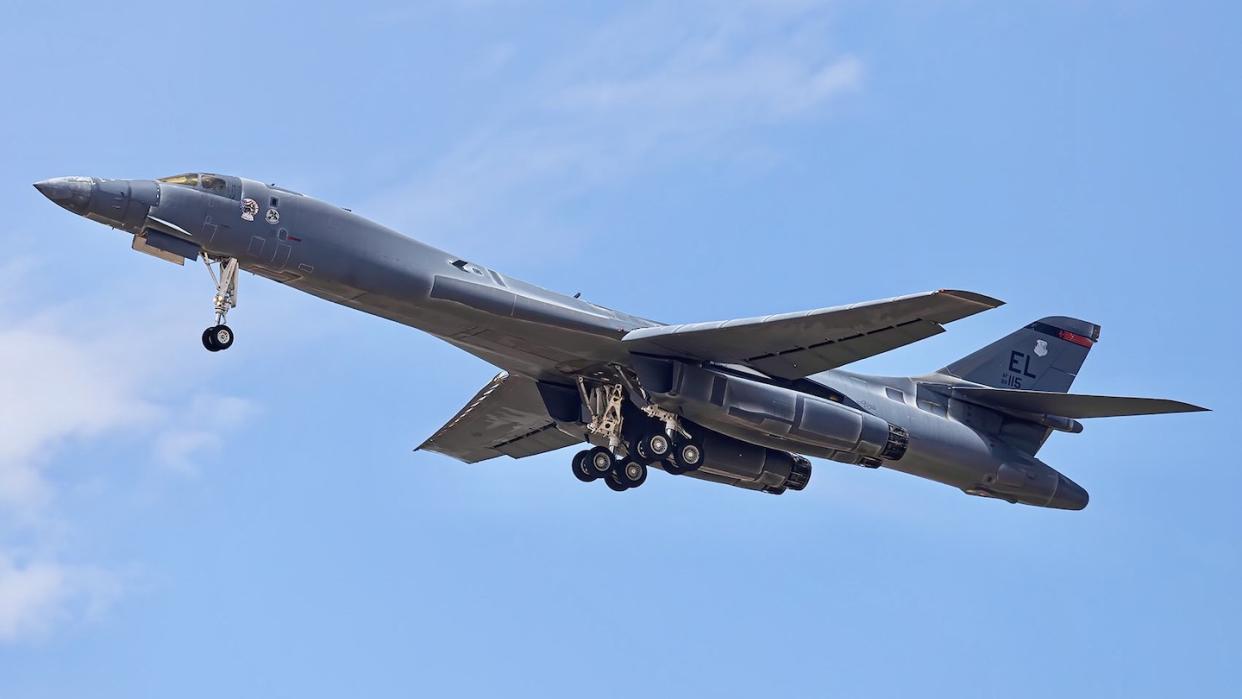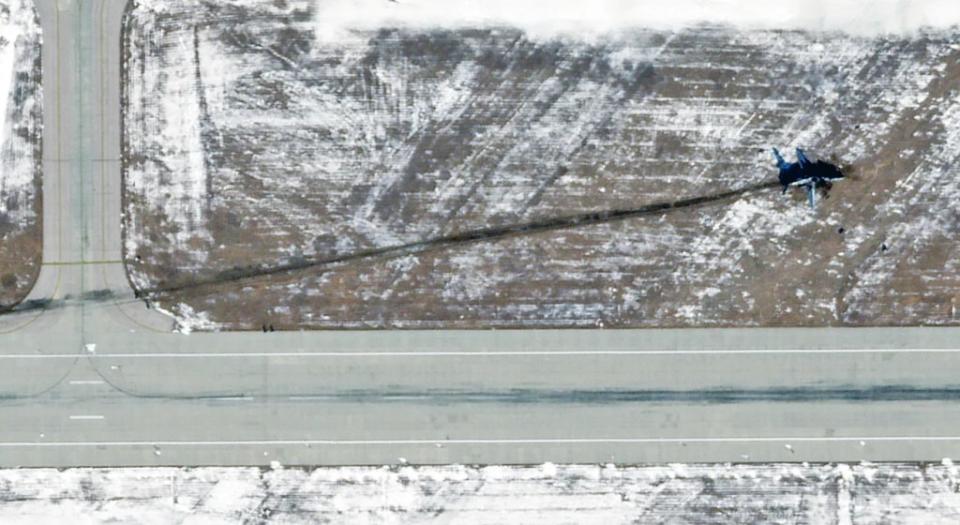B-1B Named Rage Brought Out Of Mothballs To Fly Once Again (Updated)

After three years at the boneyard, a B-1B Lancer, nicknamed Rage, has been resurrected and is flying once more. The re-appearance of the aircraft comes as the Air Force’s B-1B bombers look to be in the twilight of their service career.
Aviation photographer Cayden Smith recently pictured B-1B Rage, with the serial number 86-0115, flying at Davis–Monthan Air Force Base in Tucson, Arizona. The 309th Aerospace Maintenance and Regeneration Group (AMARG), located at the base, manages the Pentagon’s adjacent aircraft boneyard in Tucson.


Rage was one of 17 B-1Bs retired in 2021 which ended up at the boneyard. This was to help consolidate the B-1 fleet from 62 to 45 aircraft to help improve overall readiness rates and cut costs before completion of the type’s replacement, the B-21 Stealth Raider.
Moreover, Rage was just one of four B-1Bs placed into what’s known as Type 2000 (reclaimable) storage. Essentially, as we have explained before, this means the aircraft are maintained in a fashion that makes it easier and quicker for them to return to service should the need arise, due to any potential future combat losses or accidents. Type 2000 storage is one step down from Type 1000 “inviolate storage,” which prohibits any part of the aircraft from being removed. Yet even in this type of storage, it can still take months to get aircraft ready to resume their operational duties.

It seems highly likely that the bomber has been restored to operational readiness to replace the B-1 that crashed at Ellsworth Air Force Base, South Dakota earlier in January this year. As part of the aftermentioned consolidation of the B-1B fleet in 2021, there are strict legal requirements set by Congress for the service to maintain a fleet of 45 B-1Bs.

The B-1 fleet has seen its fair share of incidents and accidents over recent years, alongside general readiness issues. Notably, in 2021, an issue with the augmenter fuel pump filter housing led to a fleet-wide grounding.
This is not the first time we’ve seen a recently retired B-1B come back from Tucson to replace another due to an accident occurring.
In April this year, a B-1B nicknamed Lancelot — also retired in Type 2000 storage — was flown to Tinker Air Force Base, Oklahoma, to complete the regeneration process before joining the Air Fleet. This was in order for it to replace another aircraft that was written off after a catastrophic engine fire during routine maintenance at Dyess Air Force Base, Texas, in 2022.

Parts of B-1Bs have also been removed from the boneyard for various non-flying test purposes, too.
Other bombers have also been removed from the Bone Yard and placed back into service. In May 2019, the B-52 Wise Guy, serial number 60-0034 touched down at Barksdale Air Force Base in Louisiana to replace another one of the bombers that crashed and burned at Andersen Air Force Base, Guam, three years before. Before that, the B-52 Ghost Rider, serial 61-0007, returned to service at Minot Air Force Base, North Dakota, in February 2015 to replace a B-52 written off after an electrical fire broke out during routine maintenance in 2014.
While the size of the B-1 fleet has significantly downsized in recent years, the Air Force still values the Lancer. Efforts have been made to extend the life of the bombers prior to the introduction of the B-21, including flight envelope restrictions having been placed on the fleet, as well as systems and potential weapons upgrades.

The mission-set of the B-1B has also shifted back primarily to long-range strike after years of providing close air support and strike support for counter insurgency operations during the Global War On Terror. These extremely long sorties — which can last nearly 40 hours — point to the kinds of operations the service likely expects to conduct with its new B-21.
Moreover, the type is also prized due to its load-carrying capabilities, including the potential carriage of larger weapons and possibly hypersonic cruise missiles. The B-1B’s ability to carry many stealthy cruise missiles over great distances is already extremely relevant to a potential fight in the Pacific against China. These include the ability to fire Long-Range Anti-Ship Missiles (LRASMs), allowing the B-1B to target entire floatillas over great distances.
With this in mind, the B-1 fleet — now including Rage — will still be put to good use until it eventually faces retirement for good, but it is a bit concerning that two of just four attrition reserve airframes are already regenerated back to the relatively tiny fleet.
Hat tip: thanks to aviation photographer Cayden Smith for allowing us to use his pictures of Rage in this article.
UPDATE: 07/22/—
AMARG public affairs has responded to our request for information on Rage’s return to service with the following statement:
“At the request of Air Force Global Strike Command, Air Force Materiel Command is in the process of regenerating a B-1B to replace aircraft -0126, which was undergoing heavy structures repair development at Boeing-Palmdale.
Analysis determined regenerating an aircraft in AMARG storage could be accomplished faster, at lower cost and risk, than continuing the Boeing repair project.
Following regeneration by artisans with the Aerospace Maintenance and Regeneration Group, tail number 86-0115, nicknamed “Rage” was flown on July 2 from Davis-Monthan Air Force Base, Arizona to Tinker AFB, Oklahoma to complete Time Compliance Technical Order Updates and Programmed Depot Maintenance at the Oklahoma City Air Logistics Complex.”
Contact the author: oliver@thewarzone.com

